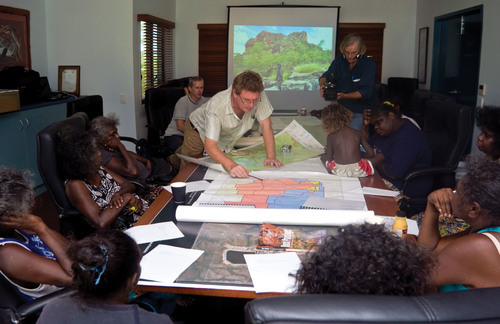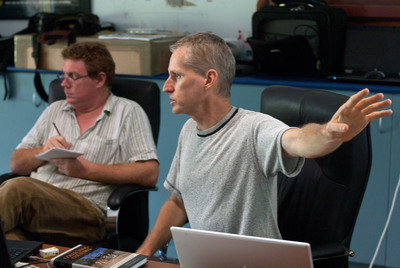| Title | Description | Listing Thumbnail Uid | Listing Thumbnail Name | Listing Description | Banner Image Uid | Banner Image Name | Introduction | Landing Page | Actions |
|---|---|---|---|---|---|---|---|---|---|
| Home Page | Show | ||||||||
| Privacy Policy | Show | ||||||||
| Culture | Show | ||||||||
| Resources | Show | ||||||||
| News | Show | ||||||||
| Staff | 2017/07/05/4de3pirnei_JOB_dicussing_proposals_with_Mirarr.jpg | JOB dicussing proposals with Mirarr.jpg | 2017/07/05/7cgfqbetyb_JOB_dicussing_proposals_with_Mirarr.jpg | JOB dicussing proposals with Mirarr.jpg | This page is under construction, more information coming soon | false | Show | ||
| About Us | The Mirarr are Traditional Owners of parts of Kakadu National Park, the Ranger and Jabiluka uranium deposits and parts of Western Arnhem Land in Australia’s Northern Territory. | true | Show | ||||||
| DjidbiDjidbi College | 2017/07/05/o2vh0nuk5_Davis_Nabarnadi_Shelton_Nango_and_Ralph_Nadjamerrik.jpg | Davis Nabarnadi, Shelton Nango and Ralph Nadjamerrik.jpg | 2017/07/05/7tolyoyx6e_Culture_First_Class_undertakes_field_work_with_ANU_rock_art_researchers.jpg | Culture First Class undertakes field work with ANU rock art researchers.jpg | false | Show | |||
| Education Videos |
A package of community education promotions has been produced as a DVD. It delivers key messages about alcohol and other drug use via songs, music and scripted scenarios. Some of the songs come from young Aboriginal people who spent time at a workshop during school holidays. They shared stories about how drinking in particular had brought changes to their world. They reflected, for example, that there was now less hunting and more fighting going on. They wanted to send a message to the older generations - one that would make them think more about the effect they were having on their children and their families. Children aged 6-17 took part over the fortnight. They came from various homelands around Jabiru. With guidance and support from visiting musicians at the Community Centre, these young people worked up several songs. They chose the style for each song, added the words, created the beats and took charge of the microphone. Two of the songs are The Jabiru Song and Where Did It Come From?
The DVD also presents three advertisements produced as part of the Middle School media course at Jabiru Area School. These were developed by the students in response to events happening around the community at the time. The students brainstormed ideas and formats, wrote the scripts, shot and acted in the scenes. All but some of the post-production was completed in four hours of class time. Three different scenarios were developed. The theme was Don't Be The Person Everyone Talks About....Think Before You Drink.
The DVD contains more music and other material and it can be ordered through the Gunbang Action Group. The DVD compilation was funded by Alcohol Strategy and Policy, Northern Territory Government. |
false | Show | ||||||
| Uranium Mining |
Three uranium deposits - Ranger, Jabiluka and Koongarra – were never included in the Park's original boundaries.
Uranium mining was imposed on the Mirarr in the late 1970s and people would still prefer it had never come to their country.
Senior Traditional Owner Yvonne Margarula says that with mining: "The promises never last but the problems always do".
Ranger
As is documented in Dirt Cheap 30 years on Yvonne Margarula’s father - the then Mirarr Senior Traditional Owner Toby Gangale - opposed plans for uranium exploration and mining on his country in the 1970s. His opposition, along with that of other local Aboriginal people, was overruled by the Federal Government when it legislated for the development of the Ranger Uranium Mine in 1976. Ranger commenced operations in 1980, the mine is now run by Energy Resources Australia (ERA) which is majority owned by Rio Tinto.
As traditional landowners, the Mirarr bear responsibility for the impacts that activity on their land has on others. The possibility of uranium from Mirarr land being incorporated into a nuclear weapon or present at the site of a nuclear accident is therefore of enormous concern to Mirarr. Despite assurances from successive Federal Governments that Australian uranium is only sold for nuclear power, the fact remains that is impossible to guarantee Australian uranium does not end up in nuclear weapons.
In April 2011, following the earthquake, tsunami and subsequent nuclear disaster in Japan, Yvonne Margarula wrote to UN Secretary-General Ban ki-Moon and expressed her sorrow at the impacts radiation is having on the lives of Japanese people. She noted that, ‘it is likely that the radiation problems at Fukushima are, at least in part, fuelled by uranium derived from our traditional lands. This makes us feel very sad.’ It has since been confirmed by Dr Robert Floyd, Director General of the Australian Safeguards and Non-Proliferation Office of the Department of Foreign Affairs and Trade, that, “Australian obligated nuclear material was at the Fukushima Daiichi site”.
A leach tank at Ranger uranium mine collapsed in December 2013 spilling over one million litres of radioactive slurry across the site. A major concern for Mirarr and other Bininj are the potential negative impacts on human health and the environment from the operations of the Ranger uranium mine. Over 200 spills, leaks and breaches of licence conditions have occurred in the four decades of the mine's existence. In 2013, a major accident at Ranger resulted in the spilling of over one million litres of radiactive liquid . All mining and processing at Ranger must conclude by January 2021. Rio Tinto and ERA then have a five year peroid in which they are required to rehabilitate the site to a standard such that it could be incorporated into the World Heritage listed Kakadu National Park. It is of the very highest priority for the Mirarr that rehabilitation is undertaken comprehensively and in a way that ensures the Mirarr and the Kakadu region are not left with the toxic legacy that Toby Gangale predicted when he said no to Ranger over four decades ago. JabilukaAn ‘agreement’ for a second uranium mine on Mirarr country, at Jabiluka, was concluded in 1982 amid great controversy. The validity of the 1982 agreement is contested by the Mirarr, who maintain it was negotiated under extreme duress. In the late 1990s ERA attempted to mine Jabiluka and the Mirarr initiated and lead a major national and international campaign against the development. The campaign was run both on environmental grounds as well as in recognition of the rights of the Traditional Owners. The campaign involved an eight-month blockade of the site by over 5000 peaceful protesters, two Federal Parliamentary inquiries, a high-level UNESCO mission to Kakadu, resolutions of the European Parliament and US Congress, significant national and international media coverage, and the receipt of major international awards for Yvonne Margarula and Jacqui Katona in recognition of their role in environmental and cultural protection. To date the Jabiluka uranium deposit has not been mined. Energy Resources of Australia has rehabilitated the site in consultation with the Mirarr. In 2005 the Mirarr and ERA (now owned by Rio Tinto) entered into an agreement that quarantined the Jabiluka dispute by stating that mining may only proceed with the written consent of the Mirarr Traditional Owners. In doing so, Rio Tinto has given meaningful effect to policies of corporate social responsibility especially with respect to the rights of Indigenous peoples.
Over the years of the Jabiluka campaign the Mirarr remained firm in their resistance to unwanted development despite persistent pressure and confidence from the government and mining company that a mine at Jabiluka was inevitable. In their struggle to protect their country and culture Traditional Owners made it crystal clear that Jabiluka was not a sustainable option for one of the world’s largest resource companies. The outcome at Jabiluka demonstrates the role that Indigenous people everywhere should be able to have in determining what happens to their country and their community.
KoongarraKoongarra was one of three uranium deposits (along with Ranger and Jabiluka) excluded from the original Kakadu National Park boundaries. Koongarra lies within the traditional lands of the Djok clan and is a region of approximately 12,000 hectares. The Koongarra uranium deposit is very close to the world famous Nourlangie rock where thousands of visitors view ancient rock art every year. The area is important in traditional storylines that include the Rainbow Serpent and Lightning Man. It is also home to an estimated 15,000 tonnes of high grade uranium which the French nuclear and mining giant Areva has been trying to access and develop for several decades. Jeffrey Lee is the Senior Traditional Owner of the Djok clan and speaks for Koongarra. Jeffrey has long resisted Areva's promises of wealth and remained firm in his commitment to care for the land. In 2010 Jeffrey Lee asked the Federal Government to protect Koongarra once and for all by including it within Kakadu, stating at the time: "When you dig a hole in that country you are killing me. I don't worry about money at all." The Mirarr have a company clan relationship with the Djok and have supported Jeffrey in his efforts to protect his country from mining. Mirarr and GAC staff attended the World Heritage Committee meeting in 2011 with Jeffrey to seek permanent protection for the Koongarra region from the threat of uranium mining.
Jeffrey Lee (R), Senior Traditional Owner of Djok Clan and Stewart Gangale (L), Mirarr Traditional, at UNESCO Headquarters (Paris, 2011) The Federal Government promised to honour Jeffrey Lee's wishes and in February 2013 Koongarra was finally included into the World Heritage listed Kakadu National Park. The area is now permanently protected from uranium mining and included within the National Park. Read more about Jeffrey Lee's succesful campaign to protect his country from uranium mining. Watch Jeffrey Lee talking about his efforts to protect his country from uranium mining.
|
2017/07/05/3a2pe8kmu0_ranger.jpg | ranger.jpg | Uranium has had an impact on the lives of the Mirarr and their community for over four decades | 2017/07/05/5khqcpezwy_ranger.jpg | ranger.jpg | Uranium mining has long caused controversy in the Kakadu region | false | Show |
| West Arnhem ID Card |
The West Arnhem ID card is an alternative form of identification for people living in the West Arnhem area. The card shows a photograph of the card holder and his or her name, address, date of birth and signature. The card can be used at licensed premises within the Park and for managing accounts at the Jabiru branch of Westpac. These cards do not replace other legitimate forms of ID (e.g. Driver’s License, Proof of Age), but they are an option for people who have no ID or those who need an alternative. They are available to any Bininj resident aged 15 or more living in the region.
Applications can be made at Gundjeihmi Aboriginal Corporation. No cost is involved. Individuals must bring evidence of who they are and where they live: this may be copies of birth certificates and other documents or, if these are not handy, then statutory declarations from selected authorities. Evidence must satisfy a 100 point test. More details can be obtained from Gundjeihmi on 08 89792200. Cards must be renewed every two years. People already with a card can simply present themselves for a new one. If all details are correct this can be done immediately. People who are visiting Kakadu from other parts of West Arnhem can apply for a card, but they must have the right documentation with them - proof of who they are and proof of where they usually live. People should make sure they have the right information with them before arriving in Jabiru. People who come into a community because they have a job can get a card quicker if they bring a signed letter from their employer to confirm their employment details and residential address. If a person arrives with the intention of staying for an extended period of time but is without work, a Confirmation of New Resident form must be completed and signed, in addition to other necessary paperwork. The local resident who is prepared to vouch for the person shifting permanently to a known address must attend at the time of the application. False or misleading statements will lead to loss of access to a West Arnhem ID card for both. There are rules about the management and use of the cards. These include:
The cards have been fully developed and supported by the Gundjeihmi Aboriginal Corporation. Some additional funding was initially provided by the Community Benenfit Fund of the Northern Territory Government. |
false | Show | ||||||
| Contact Us |
Gundjeihmi Aboriginal Corporation
|
false | Show | ||||||
| Kakadu |
Kakadu is Australia’s largest land-based national park, 250km west of Darwin and east of the vast Arnhem Land plateau.
This living culture stretches back thousands of years as can be seen in numerous prehistoric rock art paintings, as well as dreaming tracks and sites of cultural significance. Age-old stories have been handed down from tens of thousands of years ago to the present day. Aboriginal people have lived continuously in the area now known as Kakadu for over 60,000 years and the region contains one of Australia’s oldest sites of human occupation. By comparison, British occupation is recent, dating back to the 1890s. Even by Australian standards this is a short time, spanning only five or six generations. Roads, the township of Jabiru, mines, airstrips and the national park are even more recent additions, arriving from the 1970s onwards. These big changes to the cultural and economic landscape of Kakadu pose big challenges for Bininj (local Aboriginal people). Ensuring that Bininj derive lasting benefit from these changes is a key role for the GAC. SeasonsBalanda (European Australians) see three tropical seasons in the top end - the monsoonal ‘wet’, the ‘dry’ and the (humid) ‘build-up. However local Aboriginal people (Bininj) see six seasons with distinct weather and biological patterns.
Gudjewg – monsoon season
download high res PDF Kunwinjku calendar to dive into all these details These varied weather patterns account for Kakadu‘s diverse landscapes which include tidal flats, mangrove forests, floodplains, billabongs, savannah woodlands, monsoon forests and sandstone escarpments.
This rich biodiversity means Kakadu literally hums with bird and animal life, many of which are found nowhere else in the world. World HeritageKakadu National Park received World Heritage listing from the United Nations Educational, Scientific and Cultural Organization (UNESCO) in 1981 due to its outstanding cultural and natural features. It is Australia’s largest national land-based park, representing an extraordinary array of cultural and ecological features. CultureMirarr cultural practices are resilient and dynamic, forming an ongoing and strong bond between past practices and contemporary life. Mirarr have important obligations and responsibilities to look after country (gunred) and people (guhpleddi). Mirarr speak an average of three Aboriginal languages plus English with Gundjeihmi (pronounced kund-jate-me) being the most widely spoken language. Kakadu’s complex and detailed rock art galleries are one of the values cited by UNESCO in its World Heritage listing.
Nature
|
2017/06/21/2hxpwnlk37_ambrose_almudj.jpg | ambrose@almudj.jpg | Kakadu is a vibrant, thriving cultural landscape. For the Mirarr it is home. | 2017/06/21/94ya6qehix_ambrose_almudj.jpg | ambrose@almudj.jpg | Kakadu is a vibrant, thriving cultural landscape. For the Mirarr it is home. | false | Show |
| Alcohol Management Plan |
More responsible alcohol supply
Over time the circumstances and events happening in the region have changed and so too have the strategies and priorities of the Plan. The Plan remains a "living document" so efforts are concentrated on the most pressing and relevant issues confronting the community. Strategies also change as evidence of effectiveness becomes available and lessons are leaarned from experiences elsewhere. The current Plan of Action is a guide for 2017-2019 and is being constantly monitored. Key Activity UpdateThere are several elements now in place or being examined to help improve alcohol management in the area. Liquor AccordA local Liquor Accord has been operating since 2012. It is an agreement between licensees in Jabiru and at Cooinda and South Alligator, Police, Licensing, the Gundjeihmi Aboriginal Corporation and the Gunbang Action Group. It is designed to eliminate anti-social behaviour at licensed premises and enhance the enjoyment of patrons as a result. The Accord contains a number of provisions dealing with safety and security, the responsible service of alcohol, public amenity and patron conduct. BansA Ban System for misbehaviour is also in place. The Liquor Act allows licensees to ban patrons from their premises. A local system has operated in Kakadu for a number of years to bring a coordinated approach to banning individuals across all licensed premises in Kakadu. This Banning Framework is incorporated into the Liquor Accord. ID CardTo support the ban system, a local photographic ID card has been developed and is available to Bininj people who live permanently in the region. The West Arnhem ID Card is an alternative form of identification that may be presented at local licensed premises and is accepted at Westpac in Jabiru. The card includes a photograph, person’s name, address, date of birth and signature. It is useful for people who do not have a driver’s license, a Proof of Age card or some other standard form of identification. To get a card individuals must submit various documents in support of their claims. Banned Drinker OrdersIn 2017 the Northern Territory Government introduced an updated version of the Banned Drinkers Register. People on the register are banned from buying takeaway alcohol for periods of three to twelve months. People can be placed on the Register for a varaiety of reasons, including:
Individuals can even referred thmemselves for registration if they think it will help their situation. A range of support services will be offered to people on the Register to help them deal with issues of alcohol misuse. Indivduals with a ban of six months or more can get assessed and have a specialist then recommend the best form of therapeutic support to be providced. If a person completes thre recommended program, the length of the ban can be reduced. Those on a shorter ban can request an assessment. The BDR does not make treatment compulsory. The BDR system is managed by the Department of Health. Further details about the operation of thre BDR can be sought from banneddrinkerredgister.doh@nt.gov.au or 1800 237 226. Liquor Permit ProposalMuch discussion and consultation has taken place since 2012, when Bininj first raised the idea of introducing a Liquor Permit system for Kakadu. A proposal is soon to be submitted for Government consideration. It is designed so Bininj living on outstations can take limited amounts of alcohol to drink at home. Commonwealth legislation has prohibited alcohol being on Aboriginal land since the Emergency Intervention of 2008. The blanket ban was applied across the entire Territory. Prior to this there were only two places within the Park where alcohol was not allowed. Liquor Permits offer a way for this situation to change in a controlled way. Bininj will have to be more accountable for alcohol issues among their own. They will also have the opportunity to demonstrate that they too can manage alcohol responsibly. The current ban does not allow either of these possibilities. A Permit Committee will oversight the system. It will make recommendations about who should get permits and when permits might be removed. The Committee will include representatives from each community in the system and some Government officials. The Chair will be Bininj. Strict processes will have to be followed for an individual to end up with a Permit. First, the residents of each homeland must decide whether they want to be part of the system. The views of non-drinkers, children and other vulnerable groups must be taken into account and any concerns they have need to be addressed. No homeland will be forced to be part of the system. Homelands that are interested must then be endorsed by Police as suitable. Once approved, members of the community can apply for Permits. Applications will be assessed by the Permit Committee and recommendations made to the Director-General of Licensing. There are rules that govern what Permits will allow and factors that can lead to the removal of a Permit or rejection of an application.. Persistent bad behavour or breaches of the rules by individuals can have a bearing on whether an entire homeland remains part of the system.
|
false | Show | ||||||
| Terms of Reference |
From local knowledge and networks, it identifies problems associated with alcohol and other substances and then helps to formulate and coordinate practical responses that are appropriate for the region. It can also have a role in implementing and monitoring initiatives. There are formal Terms of Reference that set out the goals and processes governing the GAG. Specific activities for GAG that are prescribed within the Terms of Reference include:
While its primary focus is on issues of substance misuse, the GAG may elect to engage in other activities relevant to the wellbeing of the local community. |
false | Show | ||||||
| Contact |
To contact Gunbang Action Group telephone 08 89792200 / 0401114144 or email gundjeihmi@mirarr.net |
false | Show | ||||||
| 404 |
PAGE NOT FOUND The link you clicked may be broken or the page may have been removed. Visit the homepage. |
false | Show | ||||||
| 500 |
INTERNAL SERVER ERROR The server was unable to complete your request. |
false | Show | ||||||
| Mirarr Vision |
In 2018 the Gundjeihmi Aboriginal Corporation commissioned Stafford Strategy to prepare a comprehensive business case for the Jabiru township to repurpose as a tourism destination post mining. The imagery and executive summary from the report are available for download below: - Imagery For further information contact Gundjeihmi@mirarr.net |
2019/01/14/4wqcpgsp4b_mirarr_vision_image_.png | mirarr-vision-image .png | 2019/01/14/6tn47vkmpp_mirarr_vision_image_.png | mirarr-vision-image .png | false | Show | ||
| Kakadu West Arnhem Social Trust |
Mirarr never wanted uranium mining on their country. When the Federal Government legislated for Ranger uranium mine to proceed in 1976, it was in direct opposition to Mirarr wishes to protect Kakadu. Ranger commenced operations in 1980 and today the mine is still run by ERA, now majority owned by Rio Tinto. Mirarr have been living with the social, cultural and environmental fallout from the Ranger mine for 40 years. In 2013 the Mirarr renegotiated the agreement that governs the Ranger uranium mine to facilitate better options for the social and economic future of the wider Kakadu region. As a result of the renegotiated Ranger agreement, the Kakadu West Arnhem Social Trust (KWAST) was established. KWAST seeks to promote economic and social opportunities for Aboriginal people in Kakadu’s wider West Arnhem region. Under this renegotiated agreement a portion of the royalty payments directed to the Mirarr are to be used to benefit Bininj (Aboriginal people) in the wider region of West Arnhem. To date, over $10 million has been distributed to organisations across the Kakadu and West Arnhem regions.
|
The Kakadu West Arnhem Social Trust (KWAST) seeks to promote economic and social opportunities for Aboriginal people in Kakadu’s wider West Arnhem region. | false | Show | |||||
| GAC |
The Mirarr established Gundjeihmi Aboriginal Corporation (GAC) in 1995 to assist them in managing a balance between sustainable development, traditional practice and living culture on their land. GAC represents the rights and interests of the Mirarr as well as receiving, distributing and investing royalties from the Ranger uranium mine which was imposed on Mirarr land in 1978. GAC is run by a Mirarr board, it provides services and support for Mirarr members and other Bininj (Aboriginal people) affected by the Ranger Mine in line with cultural obligations. GAC works to ensure the cultural and economic future of the Mirarr is secure and stable. This work falls into five broad categories:
GAC’s vision for the welfare of the Mirarr extends well beyond the current projected end of the Ranger uranium mine in 2026. In 2010 the Corporation had six fulltime staff. By 2017 the organisation had grown to over 50 staff. GAC also owns and oversees the running of Marrawuddi Gallery Gundjeihmi runs many cultural and community programs and engages with strategy, policy and management across several issues including land and cultural rights, environment and conservation, mining, education, health, child protection, retail and tourism. |
2022/03/25/9edi7shn0r_dob.gac.044.jpg | dob.gac.044.jpg | The Mirarr established Gundjeihmi Aboriginal Corporation (GAC) in 1995 to assist them in managing a balance between sustainable development, traditional practice and living culture on their land. | 2015/01/27/1ckoh6xycx_gac.jpg | gac.jpg | false | Show | |
| Mirarr |
Mirarr country is a stunning place. Most Mirarr land is within the World Heritage listed Kakadu National Park including the vibrant wetlands of the Jabiluka billabong country and the stunning sandstone escarpment of Djidbidjidbi (Mount Brockman). The Mirarr estate extends beyond Kakadu to Western Arnhem Land and also includes the Ranger uranium mine, the Jabiluka mineral lease and the mining town of Jabiru.
Map of Kakadu showing township of Jabiru, Ranger Uranium Mine, Jabiluka Mineral Lease and location within Australia. Mirarr speak an average of three Aboriginal languages plus English. Of these languages the Kundjeyhmi language is the dominant tongue (pronounced kund-jate-me).
Yvonne Margarula lives on Mirarr country and is regularly called upon to make decisions in consultation with other Mirarr on an extraordinary range of issues affecting Aboriginal people of the Kakadu region. Mirarr established Gundjeihmi Aboriginal Corporation (GAC) in 1995 to represent their rights and interests. In accordance with customary law and tradition Mirarr have obligations and responsibilities to other Bininj affected by Mirarr decisions about Mirarr country. |
2019/01/25/6vj7x9ulki_mirarr.jpg | mirarr.jpg | The Mirarr are the Traditional Aboriginal Owners of lands in the north of Australia’s Northern Territory | 2019/01/25/6mbsmny7xk_mirarr.jpg | mirarr.jpg | The Mirarr are the Traditional Aboriginal Owners of lands in the north of Australia’s Northern Territory. | false | Show |
| Overview - Current Focus |
The GAG has formal responsibility for:
Meeting UpdateThe last GAG meeting was held on 28 November 2019. Some of the matters discussed:
.Further details can be obtained by contacting GAG via details below. The next GAG meeting is scheduled for 5 February 2020. ContactThe Gunbang Action Group can be contacted by telephone on 08 89792200 / 0401114144 or at email gundjeihmi@mirarr.net. This website is supported by the Gundjeihmi Aboriginal Corporation and seeding funds from Alcohol Strategy and Policy, Northern Territory Government. |
false | Show | ||||||
| Background |
In 1995 key stakeholders from the community joined together to work at reducing the negative impact of alcohol in the Kakadu/West Arnhem region. The group has continued as the Gunbang Action Group (GAG) - gunbang being the local Aboriginal word for alcohol.
Since the Northern Territory Emergency Intervention, GAG has been more focused on issues in the Kakadu area. Other areas decided to establish their own local structures. GAG stays informed of developments in neighbouring communities (e.g. Gunbalanya) and tries to coordinate with initiatives in those other areas as much as possible. The GAG is recognised as a significant stakeholder in activities relating to alcohol and other substance use in the region. While the Park Director must approve conditions governing the sale of alcohol in Kakadu National Park, the Park Management Plan identifies GAG as a key organisation that must be consulted in the process. The membership of GAG comprises government departments and local community and business interests. It meets every two to three months. The current member organisations include:
The Chair of GAG is selected from the membership and different organisations have filled the position over time. The current Chair is Justin O'Brien from the Gundjeihmi Aboriginal Corporation. Over the years the GAG has tried various approaches to engage with local Bininj, to ensure they are part of the decision-making process. It is fundamental to GAG that the Aboriginal people living in the area have an avenue for raising issues and concerns and for suggesting actions to minimise harms from alcohol and other drugs. There is an open invitation for Bininj to attend and there are consultative visits to each outstation for feedback. |
false | Show | ||||||
| Business |
How to add a youtube embed
|
false | Show | ||||||
| Disease cluster in Northern Territory region raises serious questions for Traditional owners and health professionals |
download PDF release here
The investigation report confirmed a significant increase in cancers (1.8 times expected) and fetal deaths (1.86 times expected) in the region compared to other Aboriginal and Torres Strait Islander populations in the Top End of the NT. Despite suspecting that increased rates of smoking and alcohol consumption have contributed to the disease cluster the study was unable to prove this conclusively. The investigation concluded that it is highly unlikely that exposure to ionizing radiation directly contributed to this disease cluster but it was unable to rule this out. Dr Michael Fonda, a rural specialist GP and member of the PHAA NT Branch commented ‘Our organisations have been advocating for many years for further investigation into this disease cluster in the Alligator Rivers region, an issue raised initially in a 2006 report. Justin O’Brien, CEO of Gundjeihmi Aboriginal Corporation added, ‘Given that no clear cause for the disease cluster has been identified, we jointly recommend that there be continued close monitoring of the health outcomes of the Gunbalanya-Kakadu cohort specifically studied in this investigation.’ Reuben Cooper, Chair of the Red Lily Health Board commented, ‘We strongly support the health promotion messaging emerging from this investigation to encourage reduction in smoking and alcohol consumption – health issues known to have a devastating effect on the health of Aboriginal and Torres Strait Islander people in the NT.’ Mr Cooper added however, ‘this investigation does not discuss the reasons for higher rates of smoking and alcohol consumption in the Gunbalanya-Kakadu region which could include factors such as cultural dislocation, stress and royalty payments, nor does it discuss the potential social impacts that the uranium mining industry has had on the population in the region.’ John Paterson, CEO of AMSANTcommented, ‘The Health Department advising people to stop smoking and drinking is a narrow approach, and potentially blames Aboriginal people rather than exploring approaches to reducing poverty and increasing empowerment.’ A 1984 AIATSIS report raised concerns that significant social and health impacts might eventuate following establishment of the Ranger uranium mine in the region. The report made numerous recommendations which were accepted at the time by the Australian Government, but which were not implemented. One of these recommendations was for continued monitoring of the social impact of uranium mining in the region. Mr O’Brien commented: ‘It is of great concern to GAC that significant social and health impacts resulting from uranium mining in the region were foreshadowed and have ultimately transpired, even if the sources of these impacts are not yet clear. There was a responsibility to monitor the health and wellbeing of the population in this region throughout the period of uranium mining operations and this did not take place adequately’. Dr Fonda added, ‘This disease cluster should serve as a warning that similar problems could emerge in other remote Aboriginal communities following the introduction of a mining, industrial or other significant commercial operation in their region. Rigorous health assessment and monitoring is required and projects should not be able to proceed if a safe plan cannot to be implemented.’ Mr Paterson highlighted the importance of ensuring Aboriginal communities are involved in developing frameworks for assessing health impacts. ‘Cultural and social impacts of mining need to be included in approval processes’, he said. He added, ‘Aboriginal communities need to feel comfortable that their long-term health and wellbeing will be monitored and not be threatened by such projects and that they have the option to say no to the development if it is not in their best interests.’ For further information/comment: Dr Michael Fonda (PHAA) – 0429 435 595 Kirsten Blair (Gundjeihmi Aboriginal Corporation) – 0412 853 631 Reuben Cooper (Red Lily Health Board) – 0474 354 912 John Paterson (AMSANT) – john.paterson@amsant.orgau cc ceo.executive@amsant.org.au |
2020/12/21/99ov9pdh8c_magela.jpg | magela.jpg | Public Health Association of Australia Northern Territory Branch (PHAA NT), Gundjeihmi Aboriginal Corporation, Red Lily Health Board and Aboriginal Medical Services Alliance Northern Territory (AMSANT) welcome the release of the Northern Territory Government’s long awaited report into the Gunbalanya-Kakadu disease cluster in the Northern Territory. | 2020/12/21/7s9wbq94b7_magela.jpg | magela.jpg | Public Health Association of Australia Northern Territory Branch (PHAA NT), Gundjeihmi Aboriginal Corporation, Red Lily Health Board and Aboriginal Medical Services Alliance Northern Territory (AMSANT) welcome the release of the Northern Territory Government’s long awaited report into the Gunbalanya-Kakadu disease cluster in the Northern Territory. | false | Show |
| Testing page |
|
2021/06/07/71ej4p13sn_Screen_Shot_2021_05_31_at_3.30.08_pm.png | Screen Shot 2021-05-31 at 3.30.08 pm.png | false | Show | ||||
| VSA Management Plan |
Volatile Substance Abuse (VSA) is a significant and devastating health and social problem. Petrol sniffing is the most common form of inhalant abuse in the Territory and outbreaks have occurred in Kakadu. Other volatile substances susceptible to abuse include glues, paints, solvents and the like. A local VSA Management Plan was prepared in 2012. Extensive community consultations were undertaken in two stages. The first canvassed individuals and organisations about the kind of strategies that might be included in the Plan. These were then sorted a final round of consultation was undertaken to ensure there was consensus for the final suite of measures to be proposed. The Northern Territory Government declared the Management Area in May 2013 and the VSA Management Plan was finally gazetted two months later. The Plan is now in force. The Plan sets out rules and guidelines for residents and visitors to follow with respect to the possession, sale and supply, use and storage of volatile substances.
The Management Area is within the external boundaries of the National Park.
|
false | Show | ||||||
| Community Safety Plan |
To improve safety in over 50 Aboriginal community settings across the Northern Territory, several years ago the Police initiated the development and implementation of Community Safety Plans. These are designed to respond to local priorities and take into account local circumstances. One has been put in place for Kakadu since 2014. In recognition of the role that alcohol and other substances can have on the safety and wellbeing of people, and because of the broad nature of its membership, the Gunbang Action Group agreed to be the local Community Safety Committee to oversight this project.
The Plan relates to all of Kakadu but is particularly aimed at supporting Aboriginal people. It emphasises the importance of cultural diversity in seeking solutions to problems, ensuring all community members have the opportunity to contribute to solutions and maintaining mutual respect in working together. A variety of strategies are being implemented, with the latest version of the Plan endorsed in April 2019. People are invited to highlight issues and concerns they want addressed and to offer solutions and ideas about whata else might be done to improve the safety and amenity of the community. Individuals can contact Police or GAG directly / anonymously to provide feedback and input. |
false | Show | ||||||
| Jabiru in Mirarr hands at long last |
download media release as PDF
“This is a great day for Mirarr people,” said Mirarr Senior Traditional Owner Yvonne Margarula. “The handing back of Jabiru to Mirarr recognises our land rights here and gives us economic independence. We are excited for the future of Jabiru and for the future of all our people,” she said. The Minister for Indigenous Australians, Hon. Ken Wyatt MP, the Minister for the Environment, Hon. Sussan Ley MP, the Chief Minister of the Northern Territory, Hon. Michael Gunner MLA, and the chairperson of the Northern Land Council, Sammy Bush-Blanasi, joined Mirarr, other traditional owners and the community to celebrate the milestone. The fight for land rights at Jabiru commenced in 1978 when the town was built on what was then Crown land without the involvement of Traditional Owners. The senior Mirarr elder at the time, Toby Gangale, is the father of today’s Senior Traditional Owner Yvonne Margarula. In 1998, Ms Margarula lodged the Jabiru native title claim which was decided by the Federal Court in 2016 after one of Australia’s longest-running native title matters. At an early stage, the Mirarr confirmed their wish that Jabiru should become Aboriginal land and have a bright future as the centre for regional services, tourism and for all Kakadu. The Mirarr acknowledge the role of the NT government in providing critical support early by becoming the key partner in Jabiru Kabolkmakmen Ltd in July 2019 (JKL). In August 2019, the Northern Territory government and the Traditional Owners were also joined by the Commonwealth of Australia and the mining company Energy Resources of Australia Ltd in signing the landmark Memorandum of Understanding on the Future of Jabiru and Kakadu. The Mirarr are proud of their leadership in securing this significant commitment to the future of both Jabiru and Kakadu. “Today marks an historic milestone in the economic transition of Jabiru from a mining economy into a world leading tourism centre, acknowledging, respecting and celebrating local Aboriginal culture. Mirarr look forward to welcoming more people to Jabiru, to experience country and cultural heritage,” said Justin O’Brien, CEO of Gundjeihmi Aboriginal Corporation (GAC). While acknowledging the historic importance of the land grant, Mr O’Brien said the challenges ahead for Jabiru should not be underestimated. “The most significant challenge for Jabiru has been created by ERA., which has failed to engage in a timely manner on the town’s transition. Unfortunately, ERA houses are not ready and there are at least 70 ERA houses now vacant. The performance of ERA and its majority shareholder, Rio Tinto, will be judged in coming months,” Mr O’Brien said. The cost of ERA’s outstanding housing works at Jabiru is estimated to stand at some $25M, based on condition assessments conducted by the Australian Government in April 2020. For further information: Kirsten Blair 0412 853 641 Video and images will be available after the event here |
2021/06/26/6w0arcrebv_20201002_A_0139.jpg | 20201002_A_0139.jpg | Aboriginal title secures Jabiru for investment | 2021/06/26/4y78iupdw6_20201002_A_0139.jpg | 20201002_A_0139.jpg | false | Show | |
| Board |
Gundjeihmi Aboriginal Corporation (GAC) is governed by a board structure. All members of GAC are Mirarr Traditional Owners and members elect board directors from the membership at the Annual General Meeting.
The board directs the day-to-day running of GAC which is managed by the Chief Executive Officer and staff
The Board meets regularly to discuss and make strategic decisions about the long term direction and activities of Gundjeihmi Aboriginal Corporation. Board members respond to an extraordinary range of requests and issues relating to Mirarr land and the region.
Mirarr engage their long time associate Murray Garde as interpreter for many discussions |
All decisions about the strategic direction of the Gundjeihmi Aboriginal Corporation are made by the Mirarr board. | false | Show |
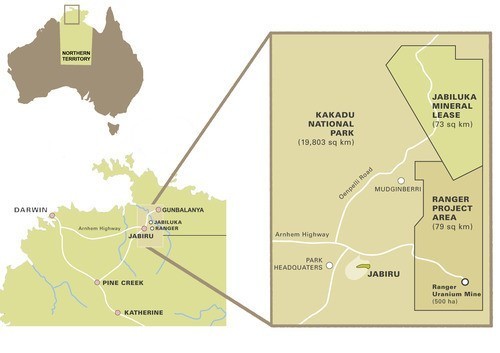
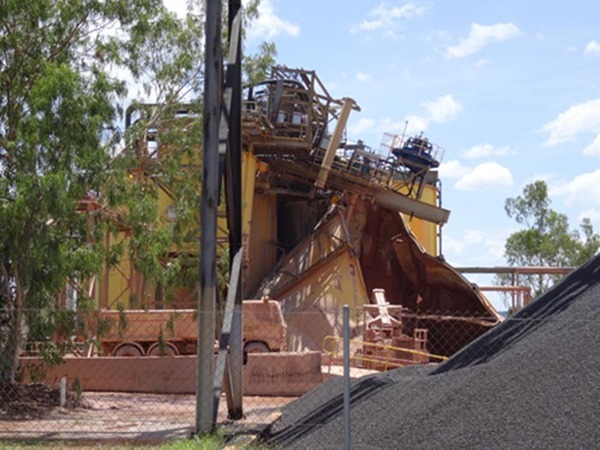
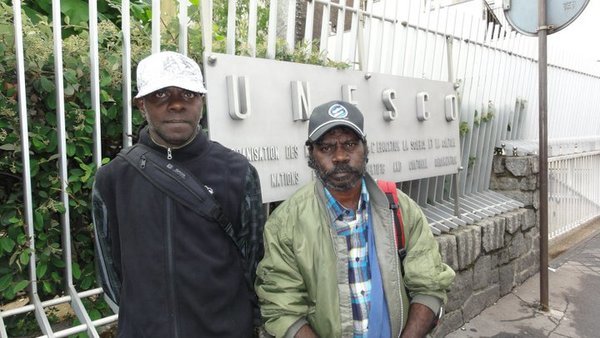
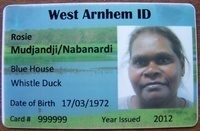
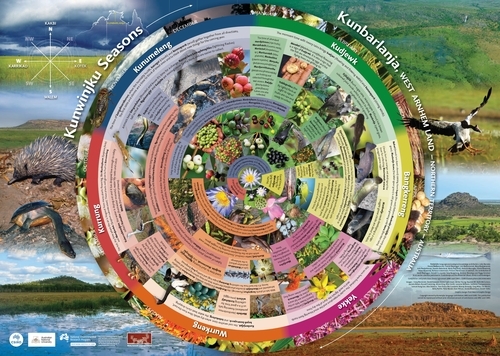
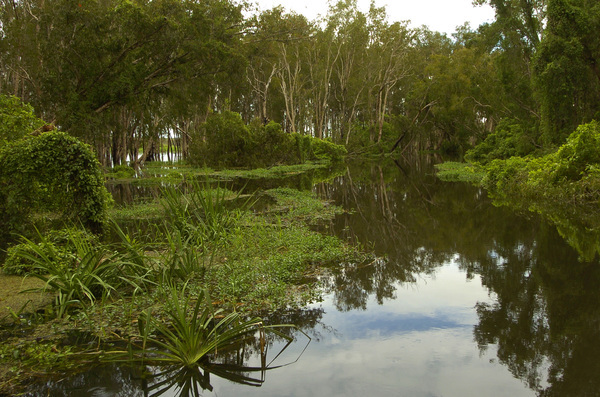
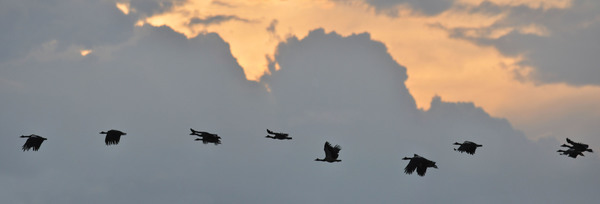
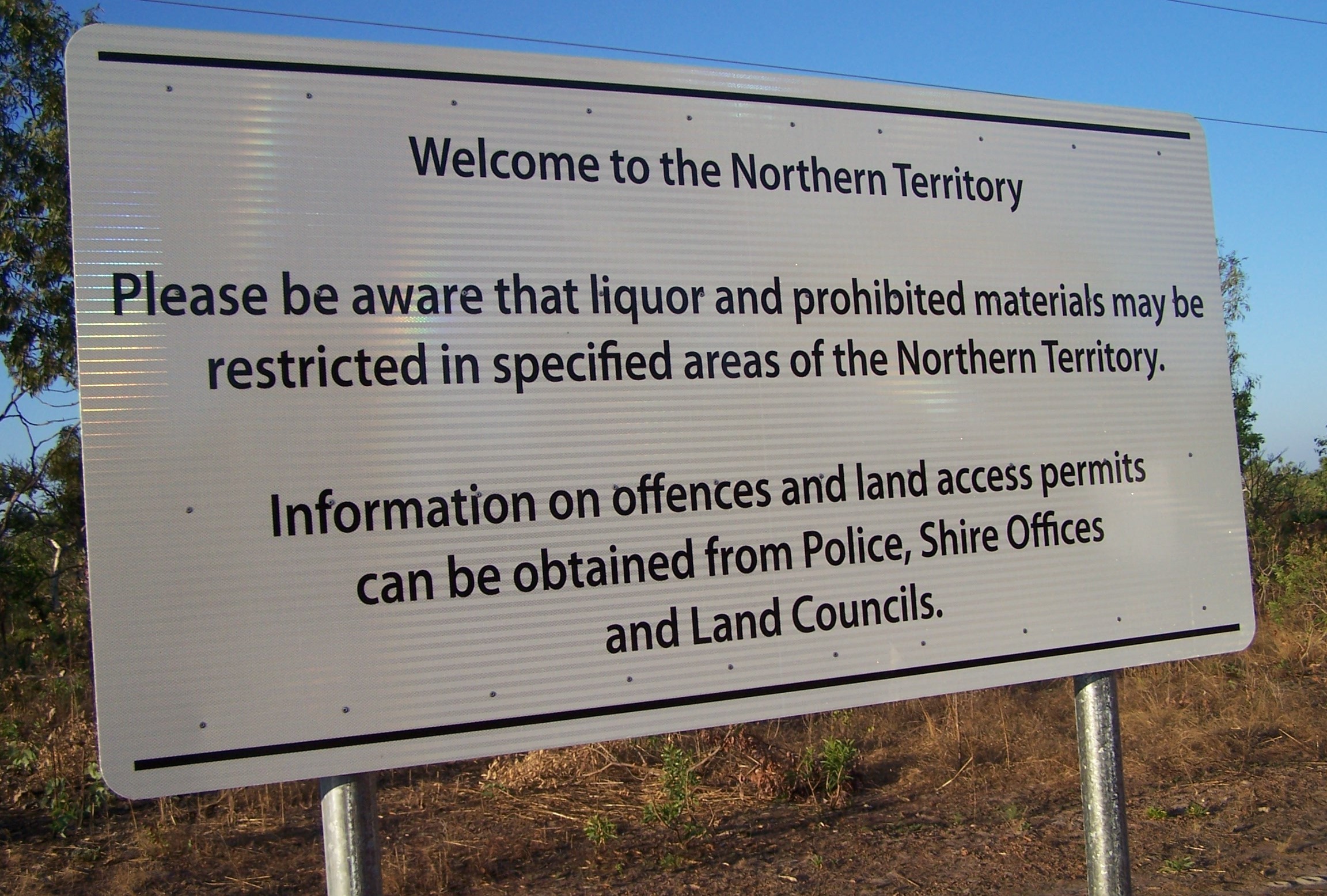 Based on extensive community consultation and research (see
Based on extensive community consultation and research (see 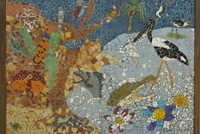 The Gunbang Action Group (GAG) works to minimise the harms experienced by the community from alcohol and other substances, including kava and volatile substances. It is a management, advisory and advocacy body.
The Gunbang Action Group (GAG) works to minimise the harms experienced by the community from alcohol and other substances, including kava and volatile substances. It is a management, advisory and advocacy body.

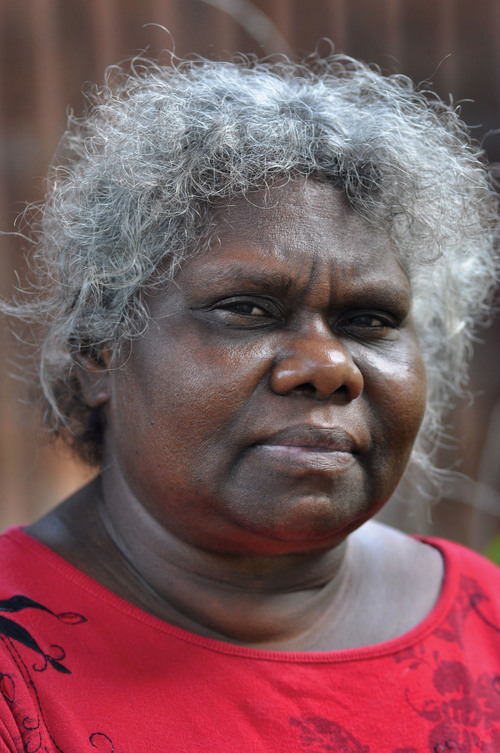
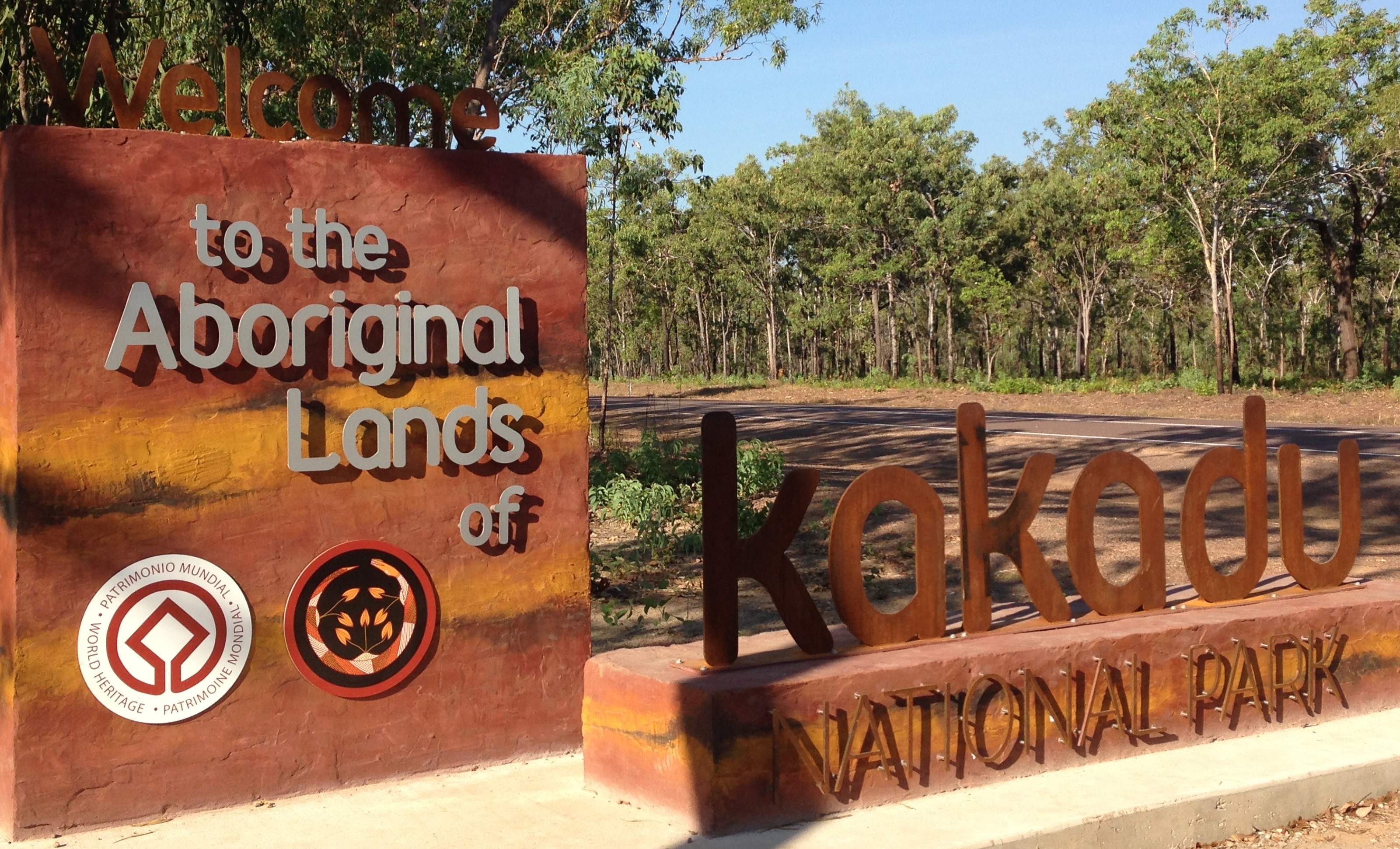 The Gunbang Action Group (GAG) is a voluntary coalition of community, business and government agencies. Its focus is on reducing risks arising from alcohol and other drug use in the Kakadu region. It works in partnership with the local Aboriginal people.
The Gunbang Action Group (GAG) is a voluntary coalition of community, business and government agencies. Its focus is on reducing risks arising from alcohol and other drug use in the Kakadu region. It works in partnership with the local Aboriginal people.
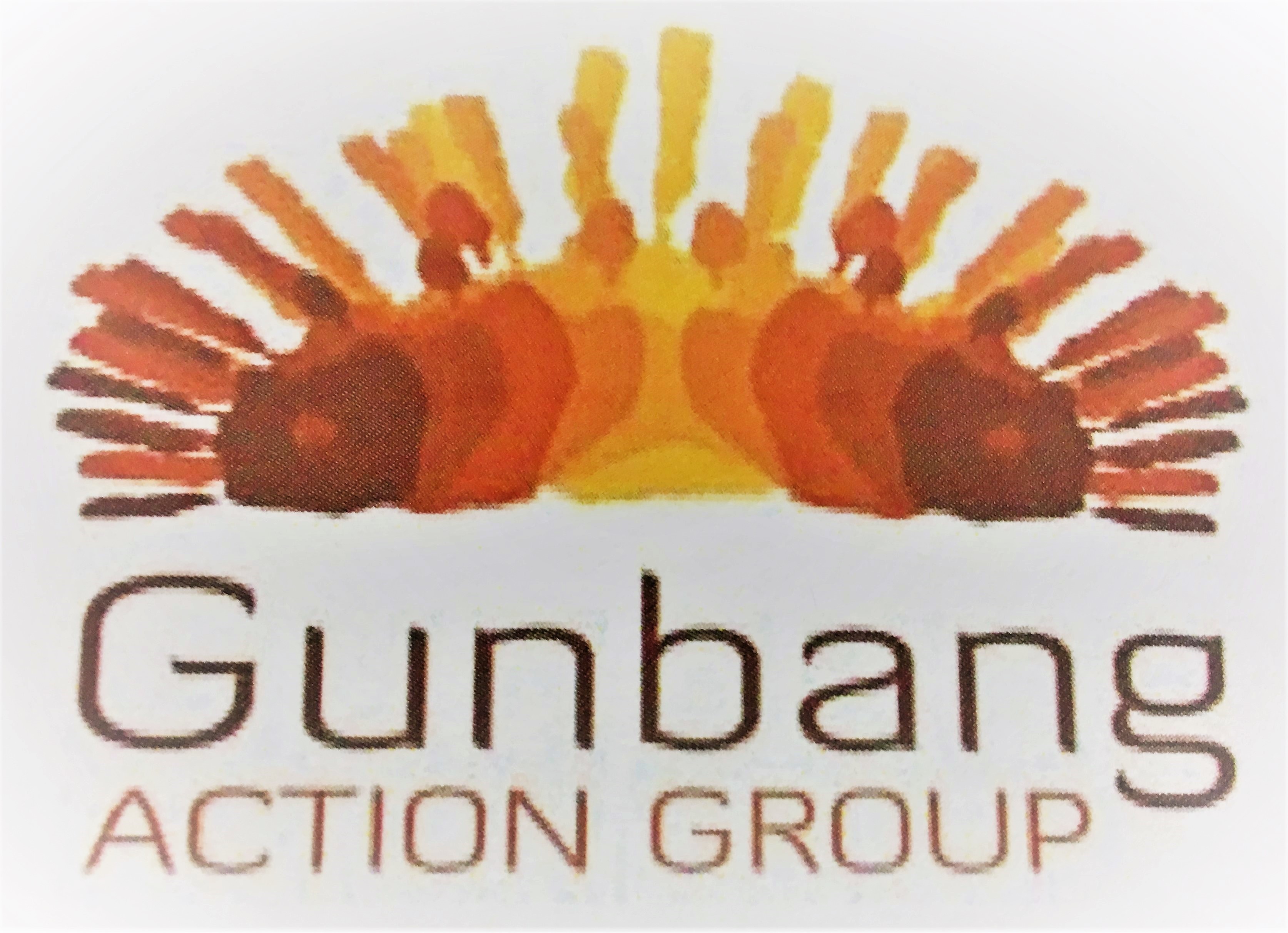

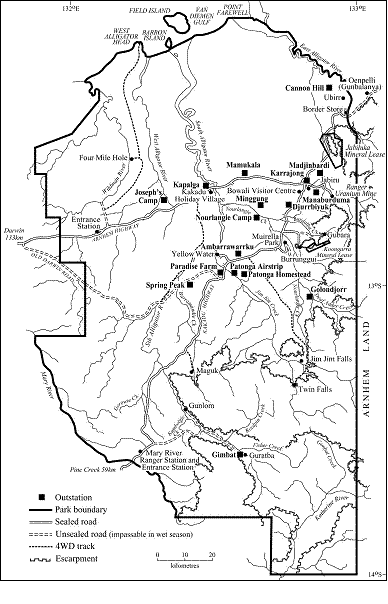
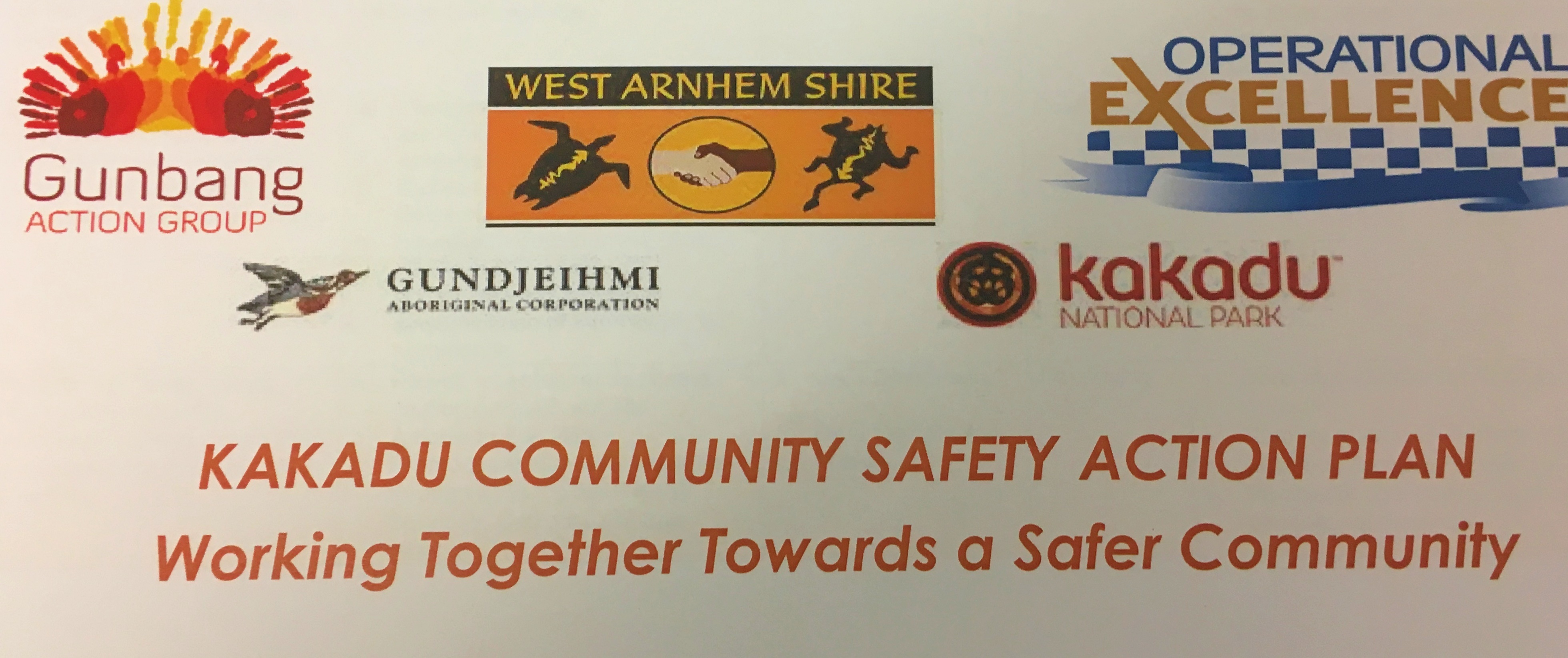 The local Action Plan sets out specific issues of concern and how they might be addressed. The Plan is reviewed annually and amended to make sure its goals and activities are responsive to changing local conditions and needs.
The local Action Plan sets out specific issues of concern and how they might be addressed. The Plan is reviewed annually and amended to make sure its goals and activities are responsive to changing local conditions and needs.
